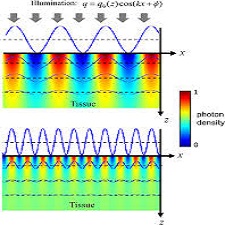توضیحات
ABSTRACT
With the increasingly commercial emphasis on dental esthetics, patients have become more interested in improving the appearance of their smile. For many ,whiter teeth is their chief goal. However, when considering dental bleaching, practitioners need to take certain precautions. Over the past decade, multiple studies have evaluated the effects of bleaching agents on restorative materials. This article reviews their conclusions, focusing mainly on the clinical impact these agents can have on amalgam, porcelain, ormocer, glass ionomer, compomer and composite resin restorations. lar bleaching products, can change the physical properties of dental restorations such as their colour, surface roughness, hardness and ion leakage. In this article, we put these changes in restorative materials into clinical perspective and provide practitioners with the evidence to properly answer patients’ questions.
INTRODUCTION
As dental whitening has become more accessible, many patients select this treatment for esthetic reasons. In most cases, they want whiter teeth. Others want to eliminate the intrinsic discoloration caused by fluoride, pulpal necrosis, tetracycline, smoking, or drinking tea, coffee or red wine. Because of the popularity of bleaching and the addition of new bleaching products every year, many have studied the effects of these products on teeth and dental restorative materials. Authors have found that hydrogen peroxide (HP) and carbamide peroxide (CP), the 2 most popu A number of studies have found that CP and HP change the properties of dental amalgam restorations, such as elution, microhardness and surface roughness. Al-Salehi and colleagues1 reported no signifcant increase in the release of metal ions from dental amalgams treated with 10% CP. However, 2 other studies found a signifcant increase in the release of metal ions from dental amalgams exposed to 10% CP2 or to 1%, 3%, 10% and 30% HP3 concentrations. Because the release of mercury, silver, copper and tin from the dental amalgams did not exceed the limits def ned by the World Health Organization, the authors2,3 concluded that bleaching teeth with amalgam restorations is not a health hazard. Another study4 identifed some factors involved in the bleaching treatment, such as the age of the dental amalgam, an unpolished amalgam surface and the acidity of the bleaching agent, as possible causes of increased release of mercury.
چکیده
با تاکید بر فزاینده تجاری در زیبایی دندان، بیماران علاقه مند به بهبود ظاهر لبخندشان شده اند. برای بسیاری از دندان های سفید تر، هدف اصلی آنها است. با این حال، هنگام انتخاب سفید کننده دندان، تمرینکنندگان باید اقدامات احتیاطی خاصی را انجام دهند. در طول دهه گذشته، مطالعات متعدد اثرات سفید کننده ها را بر روی مواد ترمیم تأمین کرده است. این مقاله نتیجه گیری های خود را بررسی می کند و تمرکز اصلی آن بر تاثیرات بالینی این عوامل می تواند بر روی آمالگام، پرسلن، اریومکسر، شیشه آینومر، کامپرمر و ترمیم کامپوزیت رزین باشد. محصولات سفید کننده لار می توانند خواص فیزیکی ترمیم های دندانی مانند رنگ آنها، زبری سطح، سختی و نشت یون را تغییر دهند. در این مقاله، ما این تغییرات را در مواد ترمیم در نظر بالینی قرار داده ایم و پزشکان را با شواهد به درستی به سوالات بیماران پاسخ می دهیم.
مقدمه
همانطور که سفید شدن دندان در دسترس است، بسیاری از بیماران این درمان را به دلایل زیبایی انتخاب می کنند. در اغلب موارد، آنها دندان های سفید تر را می خواهند. دیگران می خواهند تغییر رنگ ذاتی ناشی از فلوراید، نكروز پالپ، تتراسایکلین، سیگار كشیدن یا نوشیدن چای، شراب یا شراب قرمز را از بین ببرند. از آنجا که محبوبیت سفید کننده و اضافه کردن محصولات سفید کننده جدید هر ساله، بسیاری از این محصولات را بر روی دندان ها و مواد ترمیم کننده دندان مطالعه می کنند. نویسندگان دریافتند که پراکسید هیدروژن (HP) و پراکسید کربامید (CP)، بیشترین جمعیت را در بر می گیرد. تعدادی از مطالعات نشان می دهد که CP و HP تغییرات خواص ترمیم های آمالگام دندان، مانند اکسیداسیون، میکروارشدگی و زبری سطح را تغییر می دهند. الصالحی و همکارانش گزارش دادند که افزایش قابل توجهی در انتشار یونهای فلزی از آمالگامهای دندانی تحت درمان با 10٪ CP وجود ندارد. با این حال، دو مطالعه دیگر نشان داد که افزایش آزاد سازی یونهای فلزی از آمالگامهای دندانی در معرض 10٪ CP2 یا به میزان 1٪، 3٪، 10٪ و 30٪ HP3 افزایش یافته است. از آنجا که انتشار جیوه، نقره، مس و قلع از آمالگامهای دندانی از محدودیت های تعیین شده سازمان بهداشت جهانی تجاوز نمی کند، نویسندگان 2،3 نتیجه گیری کردند که دندان های سفید کننده با ترمیم آمالگام یک خطر بهداشتی نیستند. مطالعه دیگری4 عوامل متعددی را درگیر در درمان سفید کننده، مانند سن آمالگام دندانی، سطح آمالگام بدون پالایش و اسیدیته عامل سفید کننده، به عنوان علل احتمالی افزایش آزاد سازی جیوه شناسایی کرد.
Year: 2011
Publisher : JCDACA
By : Jessica El-Murr, Denys Ruel,Annie J. St-Georges
File Information: English Language/ 6 Page / size: 127 KB
Only site members can download free of charge after registering and adding to the cart
سال : 1390
ناشر : JCDACA
کاری از : جسیکا المر، دنیس روول، انی جی سنت جورج
اطلاعات فایل : زبان انگلیسی / 6 صفحه / حجم : KB 127


![Effects of External Bleaching on[taliem.ir]](https://taliem.ir/wp-content/uploads/Effects-of-External-Bleaching-ontaliem.ir_.jpg)





![Newer Root Canal Irrigants in Horizon A Review[taliem.ir]](https://taliem.ir/wp-content/uploads/Newer-Root-Canal-Irrigants-in-Horizon-A-Reviewtaliem.ir_-1-150x150.jpg)
![Composite materials[taliem.ir]](https://taliem.ir/wp-content/uploads/Composite-materialstaliem.ir_-150x150.jpg)
نقد و بررسیها
هنوز بررسیای ثبت نشده است.